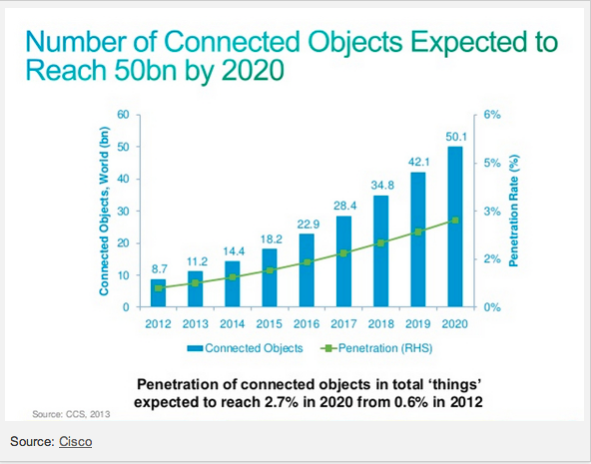The 'Internet of Things' is often talked about as one of the next big things but what exactly is it and what are its applications? While on work experience, James Higgins of Bishop Stortford College looked into the subject.

What is IoT?
The “Internet of Things” (IoT) refers to everyday objects being connected across a network that can interact and communicate with each other. By 2020 the number of connected objects is expected to reach 50 billion devices. Each ‘thing’ requires its own IP address in order to connect, which was one of the obstacles under the previous ipv4 network address system due the limited availability of addresses.Thanks to the new ipv6 network, which allows for a greater number of IP addresses, it is now possible for over 100 billion devices to be connected to the Internet. Such devices are often referred to as ‘Smart’ products. From cars to cookers - it’s a connected revolution.
What are the benefits?
The ‘Internet of Things” could have transformational effects on industry and consumers. It has the potential to greatly reduce waste, loss and costs. IoT will generate large quantities of new data, which can be processed and analysed in real time, offering enhanced value. Such data for example could be fed into smart cities with smart grids and smart buildings. Computers could soon manage road congestion more efficiently. Data obtained from smart phones, cameras, road sensors and GPS could be used to control traffic. Unlike humans, computers don’t forget to check and capture data, and do so in a far more reliable and accurate way.
What are the applications?
One area of implementation is the home, where connected appliances are intended to make life easier and more interactive. For example, smart thermostats, cookers and security can be controlled remotely, such as by a user’s smartphone, for easier operation. This offers many clear advantages of practicality, but also could save a large amount of money. A range of Smart cookers have recently emerged, that feature remote operation and also have preset meals - making cooking easier but also tastier. Healthcare is another area set to benefit, including the use of sensors both internal and external to humans. Simply put, there is a diverse range of uses that can help to inform, aid and result in a happier, easier life.
Is there a risk it gets too much?
Connected devices are playing an increasingly prominent role in our lives. Soon everything we pick up may be connected to the Internet, collecting data and observing what we do. This raises the question of, when does technology become obtrusive? It is clear that privacy is a key issue.
However IoT will be a feature of the future and should create further benefit to our world as long as it is used effectively and solving real problems, and not just for technologies sake.
Sources and further reading:
http://www.fastcompany.com/most-innovative-companies/2014/industry/the-internet-of-things